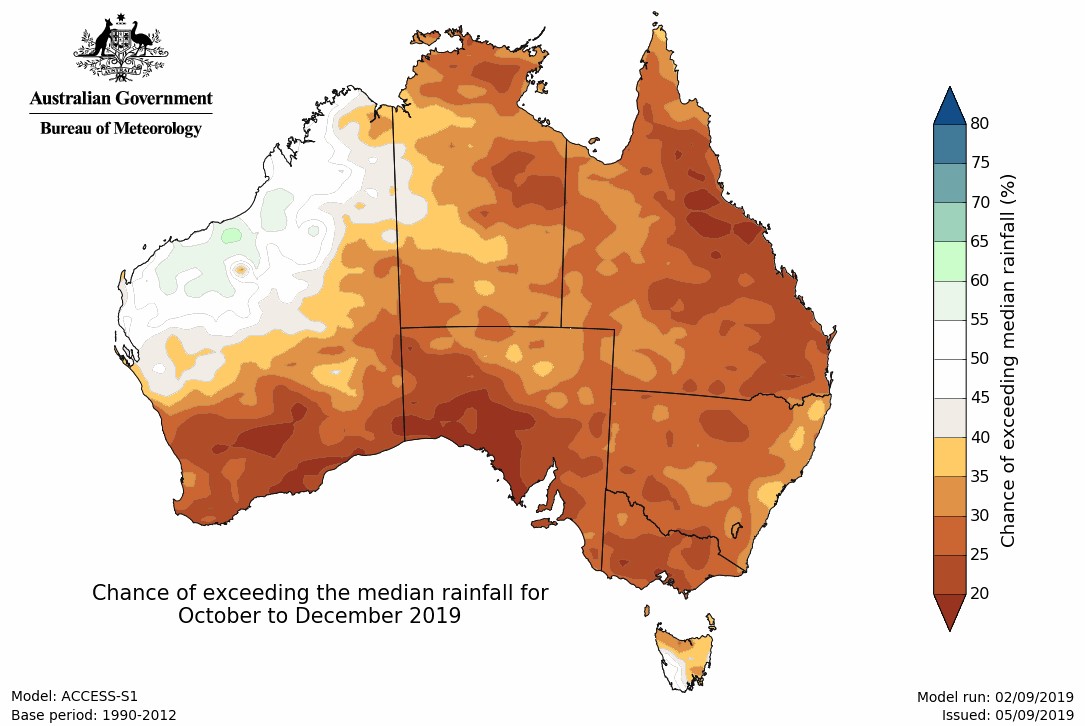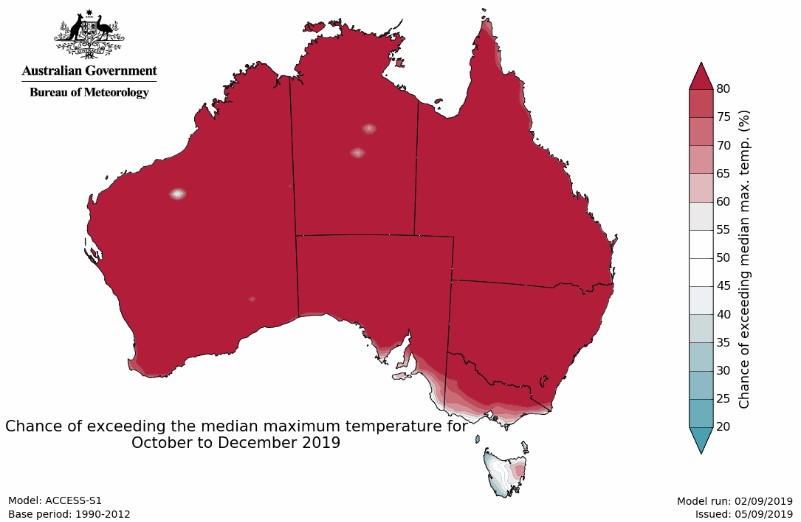Northern Territory weather outlook as at September 2019
Sourced from the Australian Bureau of Meteorology (BOM)
*This seasonal outlook was correct at the time of publication. For the most up-to-date seasonal outlook, please go to the climate outlook section of the BOM website.
The outlook for October to December 2019 indicates that:
- drier than average conditions are expected across most of the NT for the remainder of 2019
- warmer than average days and nights are likely for almost the entire NT.
Weather maps from the BOM
Figure 1: Chance of exceeding the median rainfall for October to December

Figure 2: Chance of exceeding the median maximum temperature for October to December

In addition to natural drivers, such as El Nino Southern Oscillation and the Indian Ocean Dipole, Australian climate patterns are being influenced by the long-term increasing trend in global air and ocean temperatures.
Outlook for the build-up and wet season
The BOM puts out a weekly tropical climate note, as well as a three-monthly climate outlook video.
- The current expectation for this year's build-up is hot, with early rainfall likely to be below average across the Top End and central NT this wet season.
- The El Niño – Southern Oscillation is expected to stay neutral.
- We could still see at least an average wet season from January. This is because the Indian Ocean Dipole typically breaks down in November or December, having little to no effect on Australian weather from January to April.
- Once the monsoon arrives, the timing and location of heavy rainfall will depend on shorter-scale influences, such as the location of active monsoon events, tropical cyclones, and tropical lows.
- In an average year, October, November, and December account for about 27 per cent of Darwin's annual rainfall, with 70 per cent accumulated between January and April after the first active monsoon arrives (usually during the last couple of weeks in December)
More information
Growers can subscribe to the BOM Weekly Tropical Climate Note to find out more about climate drivers affecting weather in the tropics each Tuesday. Use this page to sign up and manage a range of BOM regular emails, blogs and events.
The climate summary videos can be found on the BOM YouTube website.
For information on the pastoral outlook (including anticipated pasture growth and current estimated feed supply), visit the Pastoral Feed webpage.
Give feedback about this page.
Share this page:
URL copied!